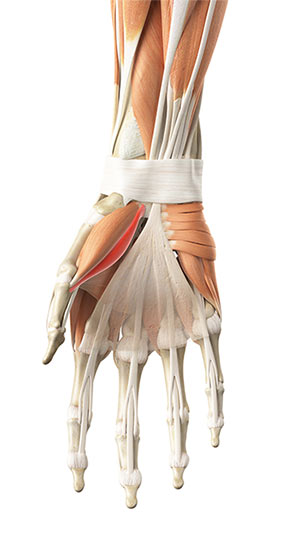
One of the important revelations for fitness is that strength and muscle mass aren’t just for aesthetics and performance. They’re significant buffers against injury risk.
Today we’re going to look at how muscle and strength help joints. These are factors that are often overlooked, but important for keeping yourself strong, healthy, and active for the rest of your life.
The Problem: Weakness and Joint Injury
Joint injuries occur across a variety of possible causes and tissues. There are hundreds, if not thousands, of common joint problems affecting our everyday lives. They’re infuriatingly common and severely damage quality of life.
These are primarily found in muscles, tendons, and bones. We’re going to focus on these tissues because they’re often the injured ones. They’re also often most negatively affected by aging.
The loss of muscle over time is called Sarcopenia and is tied to a wide variety of health problems. Something as simple as stronger, more muscular joints can protect you from the worst of this for years, even decades.
However, these tissues are also the ones that are affected by strength and size. They’re where these changes happen and we’re going to look at how adaptations here, strength and size alike, help to keep joints healthy during exercise and everyday life.
Weakness and poor control around a joint go hand-in-hand, and they’re some of the most common risk factors in joint injuries. Strength alone is one of the ways we prevent this, but what else can strength and muscle size offer to protect joints?
The list is longer than you might think.
Muscle Size
Muscle size and strength are two of the factors in joint health that are often overlooked. They’re not glamorous and aesthetic, but they’re crucially important now and into the future. This is especially true when conditions related to muscle loss (like sarcopenia) risk quality of life for many older people.
Muscle size is one of the best ways of countering these kinds of problems and improving longevity. After all, if you’re losing muscle due to aging, you’ll be healthier for longer if you’ve got more to lose.
Building muscle mass also helps to improve the connections between muscles and tendons. The development of connective tissues in muscles, and their size/strength, is a great way of keeping yourself.
It’s also a form of shock absorber when you experience impact, conducting force through pliable tissues and taking some of the stress off of your joints. This is one of the reasons why impact-heavy athletes still train for muscle size and strength.

Strength
The overall strength of a muscle is important for obvious reasons: it determines how much force you can handle through a movement and joint. Strength produces stability around joints, and this is one of the best ways of reducing injury risk.
This is especially true in muscular injuries, where stronger muscles resist pulls and strains more effectively. However, it’s important to remember that these are specific to the joint angle and muscle lengths that you’re training and getting stronger in.
This is one of the reasons you should be performing a variety of exercises, as well as practicing through full ranges of motion. Strengthening the muscles across the whole range ensures that your muscles, tendons, and joints aren’t weak or vulnerable during deep flexion or maximal extension.
As these are the areas of movements where most people ‘cheat’ exercises, they’re the areas where they tend to be weakest. These extremes of range do tend to be where we get hurt, too, if unprepared.
Reactivity and Power
While strength is important to keep muscles and tendons strong, reactivity and power are useful for cushioning joints during fast movements. These are the ability and comfort of stretching and shortening is important to prevent injury during falls and trips.
Power is the ability to produce force rapidly and is closely tied with mobility and quality of life in older people. A decline in power capacity is associated with things like falls and even fractures, which present serious problems over time.
Speed and power training are great ways of developing these factors. They also lean on strength, and it’s important to build a great foundation of strength first to make sure you’re not increasing injury risk!
However, once you’re strong enough to perform power training, it’s one of the best things you can do for injury risk. All of the evidence tells us that this is one of the most important factors for preventing disastrous joint injuries!
Tendon Remodeling
The tendons respond to exercise and strength training in similar ways to the muscles – just more slowly. They’re a stronger tissue but they’ve got relatively little blood supply, making recovery and growth a more patient process.
They’re inherently linked to the muscles and training for muscular size and strength will develop the tendons. The speed of progress needs to be monitored, but effective training for the muscles should strengthen these crucial tissues to keep joints safe and healthy.
Remember that tendon injuries tend to be associated with prolonged over-use/poor recovery, so prioritize sustainable development. This will also mean balancing effective exercise with nutrition, sleep, and other lifestyle factors.
Building strength and muscle pays off here, even if you don’t see or think about your tendons very often!

Bone Remodeling
One of the areas of strength training that is less-regularly discussed is the development of bone density. The bones respond in a similar way to muscles and tendons, responding to stress with increased strength and density.
This is one of the ways that training for muscle and strength benefits the joints. It reduces the long-term risk of osteoporosis by ensuring bones are strong and healthy. Much like muscle, the idea is that you have more to lose – and you remain active for longer into the future.
With the regularity of bone injuries in older people, it’s clearly beneficial in the long-run to give these overlooked areas some attention.
Strength Training for Muscles and Joints
The balance of exercise planning over time needs to give you time to build up basic foundational strength and resilience in the muscles, tendons, and bones. As mentioned above, these adapt at different rates and smart exercise helps them all progress together.
With a little bit of fore-thought, it’s possible to maximize the results for all 3 groups. This is easy when we use a few simple principles of good exercise programming/planning:
1. Variety to specificity: start your training with a greater range of exercises, aiming to develop a wider array of movement skills. This should also aim to strengthen the widest range of muscle groups and develop well-rounded strength and control!
2. Simple to complex: start with simpler movements that focus on the fundamentals. As strength and control improve, integrate more ‘moving parts’ and progress towards more complex exercise. This might be starting with air squats, before progressing to lunges.
3. Volume to intensity: start training with more total reps at lighter weights, before progressing to less total reps with heavier weight, or a more challenging exercise. This helps develop tendon strength while developing strength and control in the movement itself.
This combination is important so that the body has time to adapt to new training methods or stimulus. It’s a way of using earlier phases of your training to prepare for the heavier, later ones.
This doesn’t even need to be some ‘masterplan’. It could be as simple as planning exercise a month at a time, where the first 2 weeks are high-volume, low-intensity prep, while weeks 3 and 4 get progressively heavier while reducing the amount of weight used.
This allows for the low-intensity conditioning and practice associated with lower intensity work, as well as the high-intensity tendon- strengthening work. It’s a great way of structuring your workouts to maximize muscle mass, as well as strength and tendon/bone health.
If you’re going to be training anyway, this kind of monthly planning brings some structure and guidance to workouts. If anything, it’s just making sure you are training well, with a sense of purpose, rather than aimlessly stumbling about and hoping you stay healthy.

Closing Remarks
Developing effective strength and control around a joint means working with more than one tissue in mind. It means sustainably loading your exercise to build muscle, tendon, and bone strength all at the same time.
The example we’ve provided above is just one way you can structure training to improve your health and wellbeing for the long-term. Naturally, this will also improve muscle mass and contribute to strength. It’s an aesthetically, and medically, useful approach to training the body.
Keep these benefits in mind when you think about exercise, and make sure you’re always setting yourself up for the long-term win.







